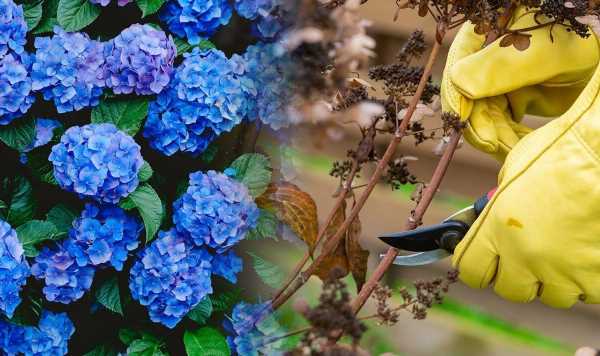
How to prune hydrangeas: When you should cut back your plant right to the base
06/10/2022Gardeners’ World: Monty Don on growing hydrangeas
We use your sign-up to provide content in ways you’ve consented to and to improve our understanding of you. This may include adverts from us and 3rd parties based on our understanding. You can unsubscribe at any time. More info
Hydrangeas are an attractive addition to your summer garden, but it’s vital that they’re regularly pruned to avoid them going out of control. You’ll also need to follow a strict set of instructions when cutting back your hydrangeas, or you might have to resort to trimming the plant right back to the base.
Hydrangeas are commonplace in gardens across the UK, and can grow up to three metres tall in full bloom.
Its name comes from the Greek for ‘water vessel’, owing to its unusual seed capsule shape.
Most hydrangeas start to flower in early spring, and could even last until the start of winter.
If you want your hydrangeas to last for as long as possible, you’ll need to regularly get out the secateurs.

Pruning encourages new flower growth throughout the seasons, according to the Royal Horticultural Society (RHS).
It can also produce a more voluminous display with regular attention, it added.
Hydrangeas will need cutting back at the start of spring, ready for the new season.
But it’s also important to regularly get rid of any weak or straggly stems.
“Mophead and lacecap hydrangeas will bloom satisfactorily with little attention, but regular pruning encourages new, vigorous growth that can produce a better display,” said the RHS.
“Likewise, other species, including the climbing hydrangea, will benefit from a trim.
“Most pruning is carried out in late winter or early spring. However, the climbing hydrangea is pruned after flowering in summer.
“Remove the dead flowerheads in early spring, cutting back the stem to the first strong, healthy pair of buds down from the faded bloom.”
DON’T MISS
Hydrangeas not blooming? How to ensure ‘vigorous growth’ [EXPLAINER]
Gardening: Top plants to ‘increase’ your property’s value [ANALYSIS]
Gardening tips: How to grow ‘bigger’ hydrangeas for summer [LATEST]


Dead mopped blooms could just be left on the plant throughout the winter, to provide some protection from the frost.
Lacecap hydrangeas are much hardier, which means they don’t need as much protection.
Simply cut back the fading blooms to the next bud to get the very best from your plant.
If your plant is neglected or in poor health, it’ll benefit from being cut back right to the base.
But, pruning all the way to the stem would remove all flowers for the entirety of the summer.
If you decide to grow some hydrangeas this summer, you should plant them in moist, well-drained soil.
Aim for a patch of soil that gets sunlight, but isn’t exposed to the sun all day long.
Very dry soil is the worst place for your hydrangeas, as it needs plenty of water.
Source: Read Full Article

